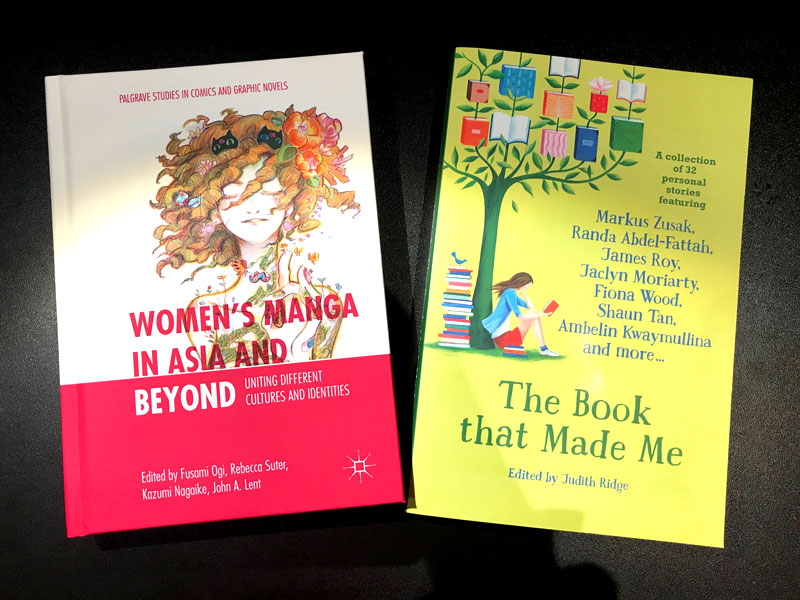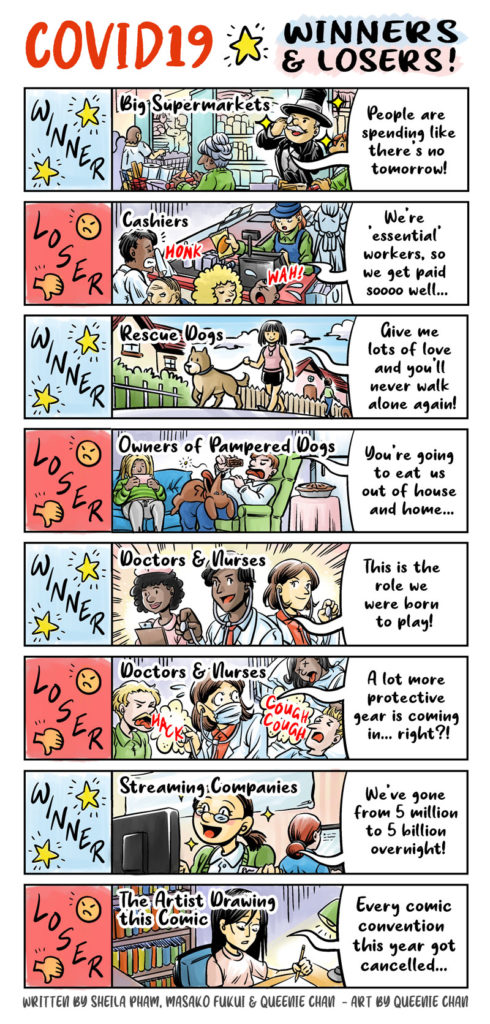Hi everyone! It’s been a while I’ve posted, but the good news is that Reuters wrote an article on me and my (feminist) comics on historical queens. It was a good interview too, with many thanks to Michael Taylor. It’s super-gratifying to have my work acknowledged.
The Rooster
This is a poem by Indonesian poet Omar Musa, which I was asked to adapt into comics form by the Cordite Poetry review from a while ago. Here it is, finally, in its full form.
The Adaptation Process
Omar Musa’s poem “The Rooster” is an exploration of masculinity, mostly about the difference between a man’s perception of himself, and of the man’s actual reality. For that reason, I’ve divided the poem into 2 ‘columns’, the left showing the man/rooster as he actually is, and the right hand side showing the man/rooster as how he sees himself.
There are, however, two things that occupy the entire width of the page – neutral scenes of nature, and the parang, which is a reference to death. Since death and nature takes everybody in the end, these things straddle both columns.
A rooster is a common, traditional representation of manhood, so when the rooster (as a symbol) is ultimately killed and discovered to be simple-minded and hollow, the meaning of the poem is quite clear. In a way, I saw the poem as about the de-throning of masculinity. So on the left-hand side, the rooster is depicted as old and mangy, where as in the right-hand side, the rooster clearly sees itself as strong and powerful.
The same applies to the depiction of the man (the narrator) in the story. Since this is an Australian poem, I wanted to work some themes of migrants and displacement into it. On the right-hand side, the image of the man is that of a white, patriarchal kind of figure, meant to represent the “Aussie battler”, which is still a very common depiction of a “typical, Australian male”. On the left hand side is an older, non-white man, which I think is a better representation of the changing face of Australia. However, despite Australia’s racial melting-pot, people still tend to see the “quintessential” Australian male as a “white, blue-collar, fair-dinkum” sort of bloke, which I think is a stereotype that at least needs to be changed, if not torn down.
Last of all, is the ‘blood on the cuffs’ at the end. This as represents a ‘lingering remnant of violence’, which I interprete as a man’s need to defend his idea of himself against those who would attack that idea. A lot of male-on-male violence happens because someone is questioning a man about his ‘manhood’, so I drew blood-trails from the cuffs back to the rooster to the right-hand side of the page. The blood is only red when it’s on the cuffs, because the threat of violence only becomes real when you do violence in real life.





